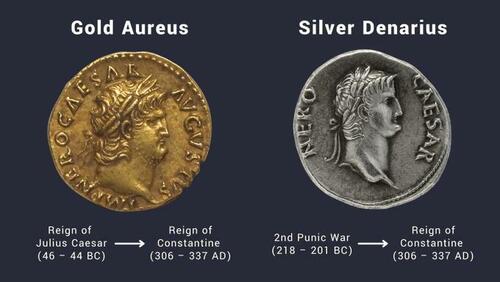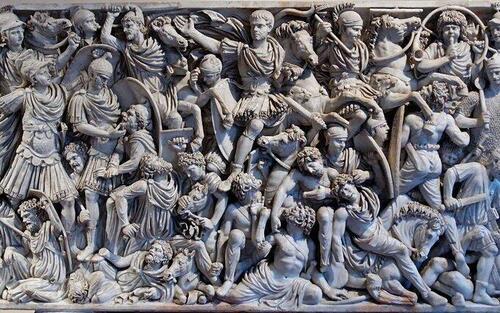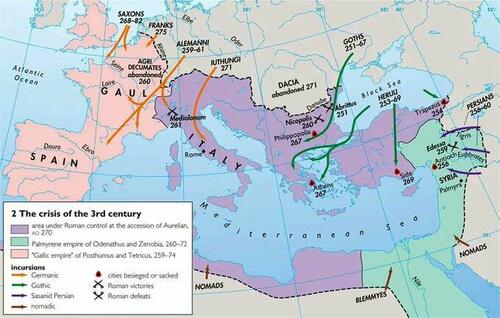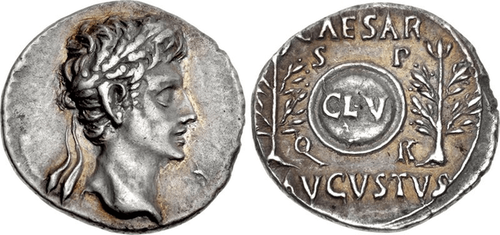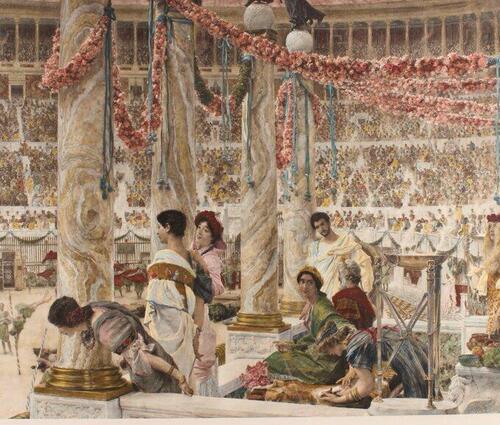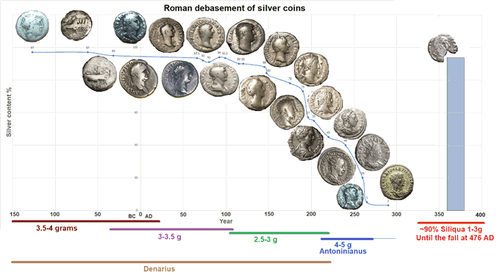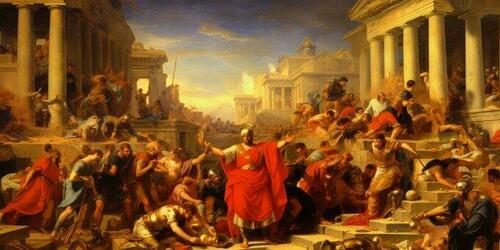With the US national debt at $34 trillion and climbing, USD reserve status under pressure, inflation destroying standards of living, and the Biden administration stoking costly war on several fronts, perhaps it's time for more thoughts on the Roman empire.
In a Tuesday thread posted to X, user 'Culture Critic' (@Culture_Crit) posted a deep dive into the unraveling of the Rome in the 3rd century. Let's jump in;
Continued...
When Augustus slowed the expansion of the empire, wealth stopped flowing from conquered lands into the treasury. Managing expenditures (construction, armies, bureaucracy) became increasingly difficult.
Whenever costs exceeded tax income, emperors minted new coins to cover it. Mining precious metals increased the supply of gold and silver coinage.
Things remained pretty stable for two centuries...
But the army was an immense burden. In the mid-2nd century, it was 70% of the entire budget — half a million soldiers were on the payroll.
Then, crisis struck.
Frontiers across the empire came under attack in the 3rd century. Military expenses soared as entire provinces were being abandoned and their tax yields lost. Plus, the mines were drying up...
When soldiers' wages could no longer be paid, "debasing" the currency was the only option.
Emperors issued new denarius (the silver coin troops were paid in) with less and less silver content — i.e., further increasing the money supply.
Nero had already begun clipping coins and diluting silver purity in 64 AD. The state soon got addicted to solving its problems this way — and lining the pockets of political insiders at the same time.
The denarius was down to 60% silver purity by the 3rd century AD. Of course, prices inflated with it.
Still, the state kept spending to maintain the illusion of prosperity, until things got really bad...
By 268 AD, the denarius was 0.5% silver. A bag full of coins replicated the silver content of a single coin a century earlier.
By 300 AD, soldiers were paid 8x in denarius compared to a century ago, and wheat prices were up 200x.
But the state still struggled to pay troops — some abandoned the military and went about pillaging towns. And for half a century, the empire was on the brink of destruction: emperors were assassinated, barbarians sacked towns and enslaved citizens...
Diocletian tried to stabilize matters by enforcing price caps on over 1,000 goods and services, but it failed. A modius of wheat that had cost 0.5 denarius in the second century, sold for over 10,000 in 338 AD.
Who pays when the money system breaks?
People pay with their freedom. The currency was so worthless that the state demanded forced labor rather than accept its own coins as tax. Merchants had to provide goods directly to the state and army, and leaving their trade was outlawed.
The masses slipped into serfdom and unrest, while the state grew larger and more authoritarian in response. The state was now keeping itself alive at all cost.
As Septimus Severus said: "Live in harmony; enrich the troops; ignore everyone else."
It's said the Roman Empire fell due to apathy. By the time the 5th century barbarians came, belief in the system was gone, and invaders seen as liberators.
"The empire could no longer afford the problem of its own existence."
Additional color provided by @EconofEmpire:
1. The exploitation of the silver to gold ratio depleted Roman silver supplies as the creditor oligarchy exported coinage to India & the east. There the ratio was as low as 4:1 & 12:1 in Rome.
2. European gold & silver supplies were exhausted around 26BC. There was little plunder left available.
3. The role of debt was a monumental factor in Rome's rise & fall. An aggressive & brutal creditor oligarchy had sought land monopolization as they seized land as collateral for unpaid debts. Their actions have led many to conclude that life within the empire was like "hell on earth."
4. The church & the state also hastened Rome's decline as they sought tribute & taxes.
The sheer brutality of the regime can be well summed up by Emperor Severus telling his generals to "enrich the men, scorn all others."
And a few replies:

